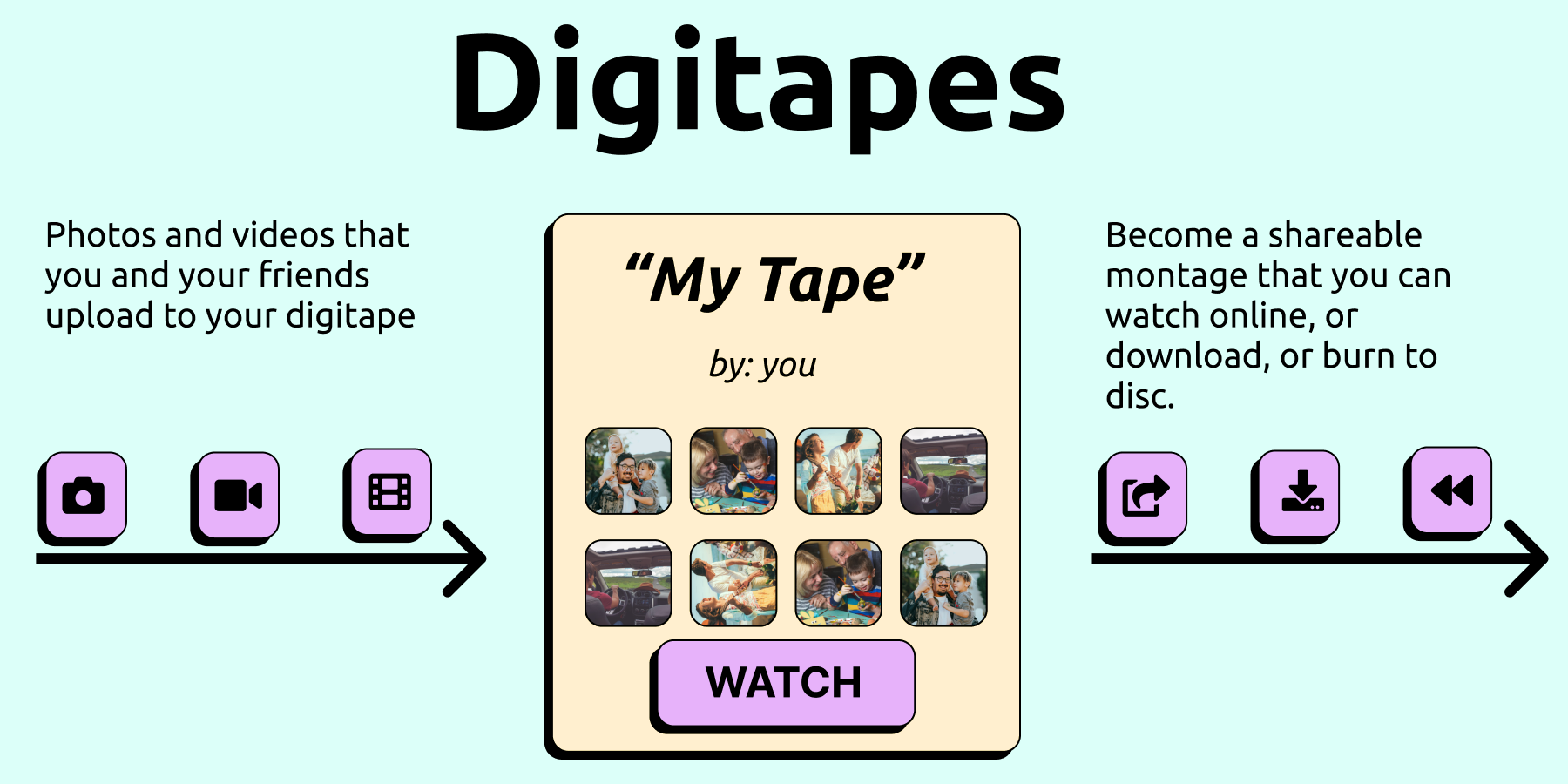
Digitapes is an open-source, open-design, personal media system to protect and cherish your favourite memories.
By establishing a "digitapes standard" - any digitapes compatible services can be used to create, store, transmit, preserve, montage or print out your photo and video albums from your phone.
You can get involved by checking out our github repository, where the code and discussions take place.
Digitapes GithubYou can create and store a digitape anywhere, then use it for any compatible service. We are currently building a phone app for easy "share to" functionality, as well as DIY roll-it-yourself storage options.
With just the open source app and DIY-storage, you and your friends can all share photos and videos of a holiday together, just like you'd share photos in messenger. That digitape can then be sent to a photo-album service to be made into a physical thing, or a simple online montage service will put it to music and upload it to youtube. Easy as the click of a button.
There is also the possibility for you to run a digitape service for others. For example:
The goal of Digitapes is to provide a standard protocol that interconnecting systems can interact with. This means A tape produced from one service can be used in any other service. The data is yours and should not be locked into any particular offering.
Digitapes exists for two reasons:
Digitapes arose from finding it difficult to correlate photos based on a topic (such as a birth of a child, or a family holiday) across different devices and different cloud services.
Many phone services (such as Google Photos, or iCloud) work on a "camera roll" principle: every photo you take is stored, and later, catergorised into certain topics. This can lead to false positives (ie: wrong images making their way into albums) and also includes vendor lock in with the cloud provider.
After digging out some old super-8 and VHS tapes from the attic and watching childhood memories, we've realised that we need a similar open standard that can preserve and collate photos and video from our current generation, into the future.